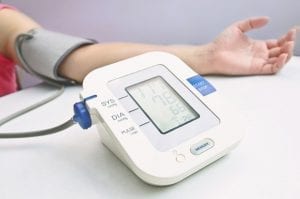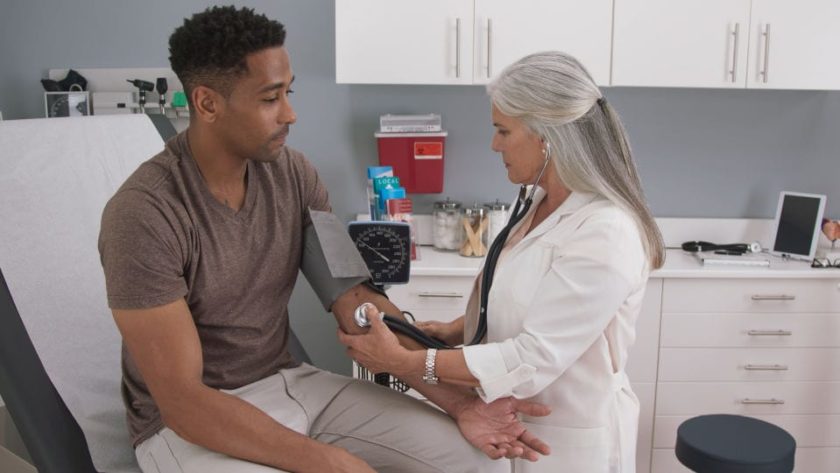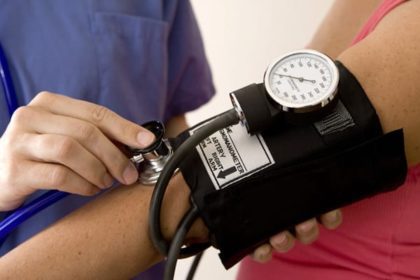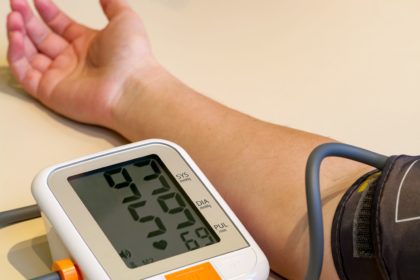Your blood pressure predicts your risk of stroke, heart disease, and kidney failure and assesses your need to be on medications. There are several factors that can affect your readings by 5 to 50 points. Here’s how to avoid the most common errors when measuring your blood pressure.
1. Cuff size

Be sure the cuff is correct size. Taking your blood pressure with the wrong cuff size is the #1 biggest mistake that affects blood pressure readings.
If the cuff is too big, you’ll get an artificially LOW reading, and if it’s too small, you’ll get an artificially HIGH reading.
2. Arm Position
Your palm should be facing up and your arm should be supported and horizontal at the level of the midpoint of your sternum (chest bone) which is at the approximate level of the right atrium of your heart.
It may be necessary to place a pillow under your arm or adjust the chair or table to achieve the correct position.
- If your upper arm is BELOW the level of the right atrium, your blood pressure readings will be too high (blood is flowing down into the arm).
- If the upper arm is ABOVE heart level, the readings will be too low (blood is flowing down from the arm).

Researchers studied a group of outpatients to determine the effects of arm position on blood pressure measurements.
Blood pressures were taken and compared in the following arm positions:
- Sitting with arms hanging down and elbows resting on the armrests of a chair (i.e., the elbow is at a right angle)
- Sitting with arms supported at the level of the mid-sternum
The results showed that blood pressure readings were significantly higher when sitting with arms on the armrest of the chair — over 10 mm Hg higher in both systolic (upper number) and diastolic (lower number) pressures.
In another study of 100 random emergency room patients, blood pressures were compared in two positions:

- Arm lax and hanging down parallel to the body
- Arm in the “correct” position.
Among the seated patients, 22% of them were diagnosed with hypertension, but twice as many patients were diagnosed with high blood pressure with the arm hanging down.
Be sure to note the position of your arm whenever a clinician takes your blood pressure.
3. Rest Period
Rest quietly (no talking) and comfortably for 5-10 minutes prior to taking your blood pressure. Activities, such as exercise or eating before talking your blood pressure, will affect your reading.
4. Posture
Sit comfortably with your legs uncrossed, feet flat on the floor, with your back and arm supported to avoid a higher reading.
Beware! If you’re older, have symptoms or are on a drug regimen that cause you to get dizzy or lightheaded, have your blood pressure checked routinely in both the seated and standing positions.
5. Muscle Tension
Stress and anxiety can cause muscle tension which can increase your blood pressure. Meditate for 10 minutes and practice slow, deep breathing to relax.
Continue here… How to Quickly Improve Blood Pressure Readings.
![]() Karen’s Fit Tip: If you are on hypertensive medication(s), your blood pressure readings may vary depending on what time of the day you take your drugs.
Karen’s Fit Tip: If you are on hypertensive medication(s), your blood pressure readings may vary depending on what time of the day you take your drugs.
Whenever you record your blood pressure, also note what time you took your meds. This relationship may be helpful to your prescribing physician when assessing the effect of the anti-hypertensive drugs.





